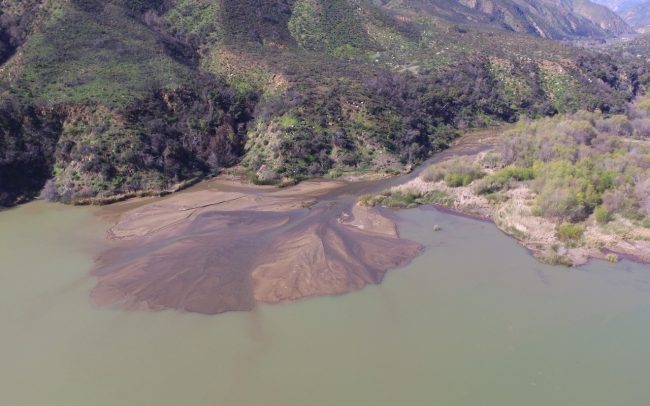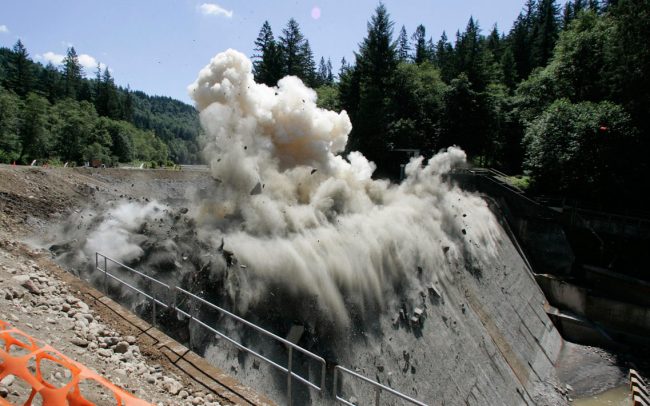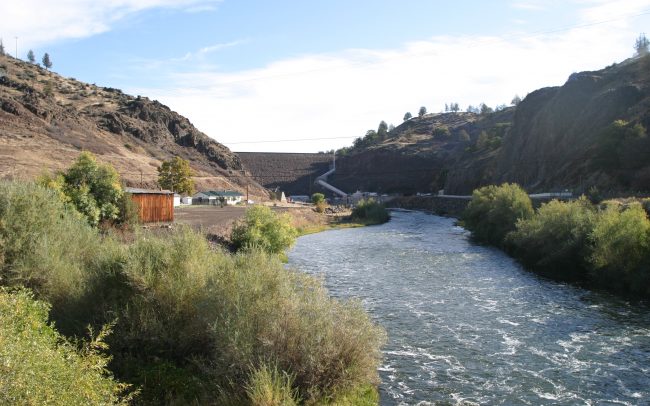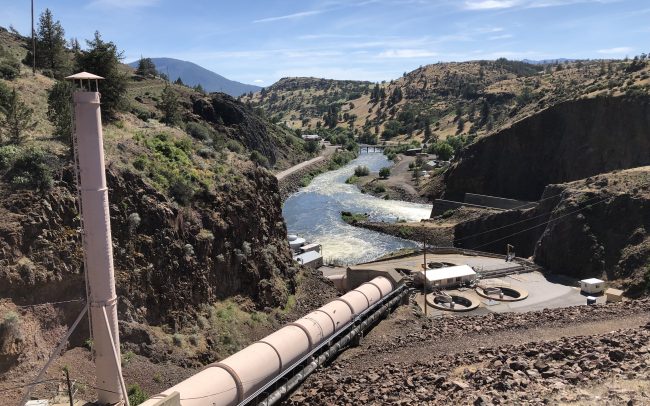Although removing four dams on the Klamath River will have dramatic effects on the river ecosystem and may fundamentally alter riverine nutrient cycling downstream of the dams, our studies show that impacts of releasing the millions of tons of fine sediment stored behind the dams will be relatively short-lived and will not likely eradicate any species.
Sediment transport simulations
In order to arrive at an optimum reservoir drawdown scenario, Stillwater Sciences used the DREAM-1 dynamic sediment transport model (Cui et al. 2006) to analyze multiple concurrent drawdown alternatives, including a variety of different drawdown start dates and drawdown rates.
Effects of sediment release on aquatic biota
Predictions of total suspended sediment and duration from the DREAM-1 modeling combined with Newcombe and Jensen’s (1996) “severity of ill effects indices” was used to assess possible impacts to selected key species. Based on this analysis, even under a worst case scenario, we expect populations of all focal species to recover in the long term; however, we recommend managers consider interim measures to ensure strong population recovery, including the protection of weak year classes, annual harvest management strategies, capture of adults or juveniles, increasing fall and spring instream flows, and improved habitat quality in tributaries.
Water quality synthesis
Although sediment loads downstream of the dams will dramatically increase in the short term, we anticipate little to no impact from sediment-associated nutrients or contaminants on riverine biota. Long-term effects on temperature, nutrients, dissolved oxygen, pH, and turbidity are expected; however, most will likely benefit native aquatic species. As part of our analysis, we proposed ten conceptual study plans to address remaining water quality data gaps (including those related to climate change) and ultimately support informed decision-making regarding dam removal.
EIS/EIR and Secretarial Determination Overview Report
Stillwater Sciences is currently part of an interdisciplinary team of consultants, federal and state agencies, and tribal entities working to develop an Environmental Impact Statement/Environmental Impact Report (EIS/EIR) and Secretarial Determination Overview Report to assess the potential removal of four dams on the Klamath River in northern California and southern Oregon. Stillwater scientists are providing technical support to multiple federal and state agency subteams for the Secretarial Determination process in the resource areas of water quality, fisheries biology, sediment transport, hydrology, and geomorphology. Technical analyses include consideration of Klamath Hydropower Settlement Agreement (KHSA) and Klamath Basin Restoration Agreement (KBRA) implementation measures over a 50-year analysis period, as well as the numerous scientific and management questions related to potential dam removal.




